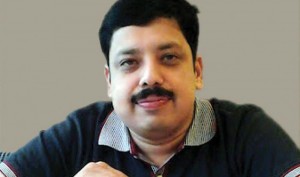Asura – Tale of the Vanquished: The Story of Ravana and His People is the Ramayana told through Ravana’s perspective. No one in this tale, not even Ravana himself, is either god or devil. Instead, every character is human, only differentiated from the other by their caste and love of power. Thus, terms such as Deva and Asura, which are otherwise associated with divinity and evil, are only warring castes. What Neelakantan achieves is a deconstruction of the epic to a more relatable and plausible chain of events, reminding us that legends of gods and such are only machinations of age-old politicos and the powers that be. This ‘Ravanayana’ is a fascinating reinterpretation of the Ramayana. One only wishes it were written with more finesse to hold the reader’s attention better.
1. Why Ravana and why the Ramayana?
Ravana as a protagonist offers immense possibilities. Apart from Duryodhana, who is far less complicated, few characters in Indian mythology offer so much challenge. He is a ruler about whom Rama talks in glowing terms. A consummate Veena player, an astrologer, scientist, authority on medicine, musician, artist, warrior, great administrator – I do not think any villain has been portrayed with so many qualities in any story.
2. How much and how long did you have to research before writing the book?
Asura is a work of passion which has taken my entire life to write. I have been exposed to mythology right from my childhood and Ravana’s story has always fascinated me. As I grew up, I got exposed to various traditions and folk tales of Ravana. It took six years to bring the novel to the current form, with lots of breaks for travel and research in between.
3. Did you come across any surprising revelations during your research?
One of the most surprising revelations was hearing about Moppilah Ramayana or Muslim Ramayana of the Malabar where Rama is Lama and is a Sultan instead of the prince of Ayodhya. In another version of the Ramayana, Sita is a tribal princess for whose hand both Rama and Ravana fight. One of the Kannada versions says Ravana is the mother of Sita, yes, the mother, and another one portrays Rama and Ravana as brothers. The sheer variety is mind-boggling.
4. Do you intend to continue rewriting epics and myths in the antagonist’s point of view? What is your next project?
I am writing Mahabharata from the point of view of Duryodhana and his people. But I have no intention of selecting all the villains in the history and mythology and making heroes out of them. Ravana and Duryodhana offer immense possibilities which is why I love writing about them.
Volume 2 Issue 5
































